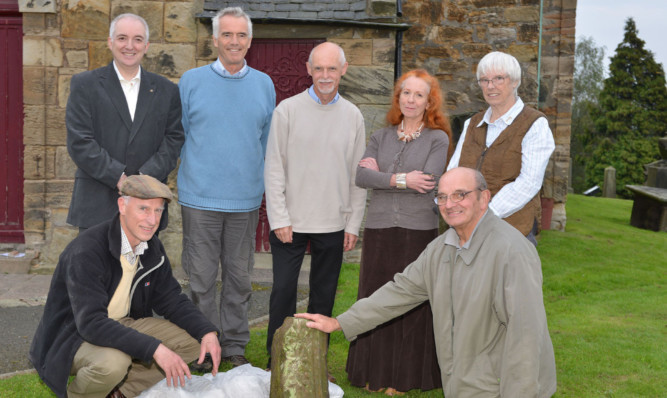An archaeological project designed to uncover the history of Markinch Kirk has thrown up a number of secrets.
Markinch Heritage Group and Markinch and Thornton Kirk Session, along with the Living Lomonds Landscape Partnership, have embarked on the project to reveal more about the important role the kirk played in the early medieval period.
The project is funded by the lottery with contributions from the Hunter Trust and Fife Council.
The project group, working with a professional team, have removed a rotten timber ceiling in the old 12th Century tower to reveal a massive Romanesque arch almost 13ft high.
The arch formed a link from the 12th Century tower to the now-demolished medieval nave.
Work is now continuing to clear crumbling plaster from the inner walls of the tower.
A team of modern masons has already revealed dozens of medieval masons’ marks and a blocked doorway.
The tower and church seem to have been built some time between 1120 and 1150 and it is hoped the recent findings will help narrow this down.
The team have also removed some panelling on the balcony within the church to reveal the other side of the arch, along with an unexpected find of a cross of St John carved on the keystone of the tower arch facing into the nave.
The origin of this is not yet known but research is under way to reveal its significance.
Church officer and heritage group member Gavin Brown first drew attention to some unusually carved stones on the front of the building.
He said: “This has been a long and detailed research project but we are now beginning to realise how important this building once was.
“It is hoped it will one day attract visitors from all over the country, perhaps as part of a pilgrim way.
“However, the most surprising find to date is a curved stone (pictured) found last week at the back of the kirk.”
Research has identified the curved stone is covered in a “chip-carved saltire” motif of a type originating in Normandy, coming from what seems to have been an even wider 12th Century arch.
This may have stood inside the church between the nave and the chancel of the original building.
Nobody was aware such a large arch ever existed and it points to a once highly decorated and probably colourful interior.
This stone has been identified as a “hood-moulding”, the upper segment of an arch which may once have spanned the entire width of the church.
Other fragments have been found embedded in the front wall of the building where they were reused by builders widening the church more than 200 years ago.
The evidence so far seems to indicate Markinch Church was an important building drawing upon Norman French design, probably using Northumbrian stonemasons and built by a Gaelic-speaking earl with Fife labour.
The research already carried out by the heritage group is beginning to identify the importance of Markinch in the early medieval period, when court cases were heard at nearby Northhall (probably once known as Dalginch).
The church would have been where the powerful MacDuff family held mass, perhaps after judgments had been made.
When works are completed, an open day will be announced on the LLLP website www.livinglomonds.org.uk.
